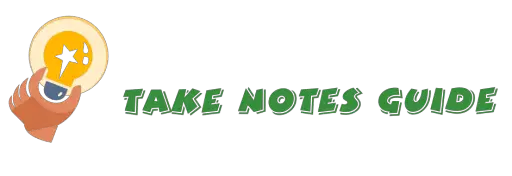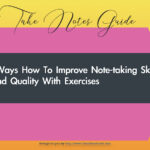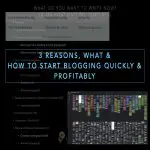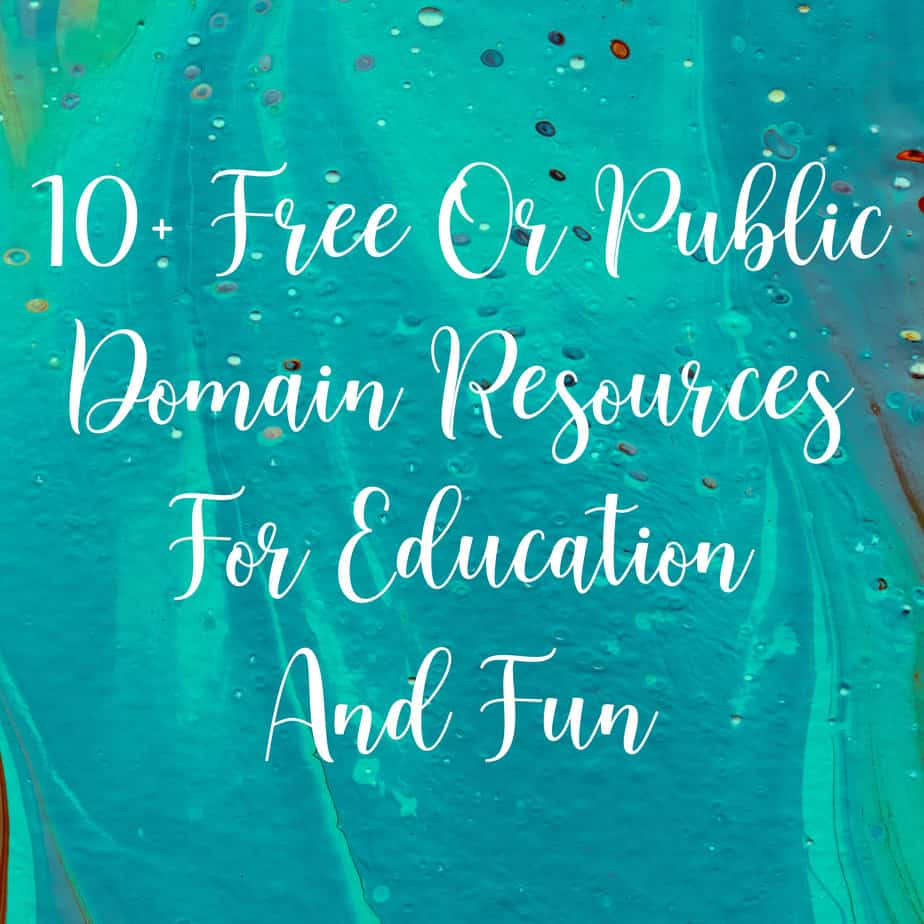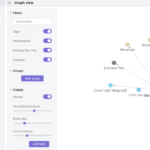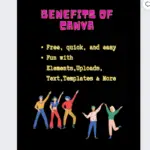Best as in accordance to what we can do at the moment with what is available to us. These are best based on my personal opinions and recommendations. I believe best is subjective to the individual and not one method works for everyone equally. Whichever tools you adopt, the important thing is the quality of the point you took. The more objective analytical thought effort you put in, the more probable for better notes.
For example, you are required to write an essay on your chosen novel or book. You contemplate deeply on the subject and write thought-provoking ideas about the book on both the positive aspects and where you disagree with clear valid opposing points and even questions on certain elements. If you put yourself in the shoes of a fair examiner who reads your paper, would you prefer a superficial answer or an objective one that is thought-provoking by poking at what is lacking but also complements its strengths based on your own considerations?
Here are recommendations for some possibly best or smartest ways or tools on how to take modern notes of different aspects or purposes.
Gifted or smart ways to take notes:
- With mental notes – Best for gifted minds: naturally superior
- With different notes – Best for the smart minds
Methods to take notes:
- With the relaxed method – Probably the best way before starting
- With knowing thyself method – Best way I know myself
- With fast method – Best to not waste time
- Compare notes method – Best way to improve by knowing and evaluating yourself via comparison or feedback
- With writing away method – Best way to generate more ideas with action
- With structured method – Best for organized planning of research writing
- With telling a story method – Best for those who have an imaginative mind & loves to listen and read stories
- With power words method – Best way with deliberately short and impactful words
- With symbolic logic method – Best way to represent logical expressions by translating everyday language into symbolic notation
- The method you started with – Familiarity wins
- Combinations – Explore yourself to know what works best for you from the methods on Takenotesguide including from posts in How to take good notes and how to take better notes
Apps
- With basic visual notes by camera app and audio recording – best for focus on understanding and minimize distractions with a Smartphone
- With Typora – best markdown winner of beauty and intuitive use for Mac desktop app
- With Gingkoapp – best for an organizational-style overview of notes
- With Evernote – best for general purpose and features-rich note-taking
- With Memrise – best for memory purpose with spaced repetitions notes as flashcards
Body conditioning
- Take showers or wash your face – Best in a way to quickly improve blood circulation and mood.
- Exercise and stretching – Simple yet effective
- Morning tea such as green tea or matcha
The recommendations here refer to the most powerful and effective way you can take note that YOU personally can connect with (Smartest way). What works for someone may not for you. That also means that the methods or ways mentioned in how to take good notes and how to take better notes may already work best for you. That said, I want to share with you some of the best ways one may possibly take notes, in the sense that I want to show you the potential of why the methods or ways here can or could be best in their own merit.
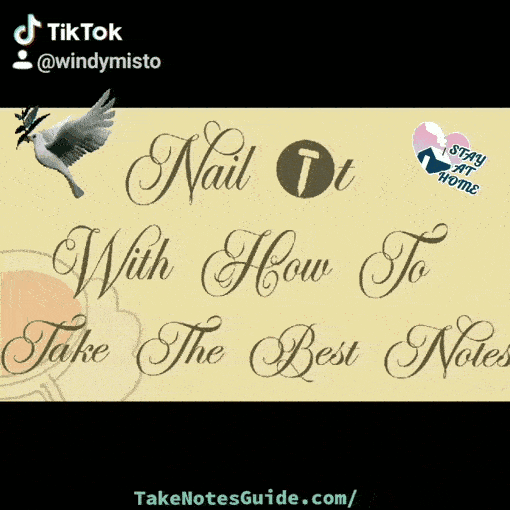
Gifted and smart
Mental Notes
The best notes are taken to heart. Please do not stress over this, it is a fact some people are more naturally gifted than others. Another perspective is that one may take mental notes naturally or trained to be when they have become so accustomed to a method. Take, for example, math abacus. It is a physical manual device to help people perform arithmetic calculation quickly. However, when very young children are trained to use an abacus and then progress to the mental abacus, they can calculate large numbers very quickly in their mind. Watch an Abacus Mental Math Competition YouTube video here. Remember these children are trained at a very young age to be proficient, but as adults, we can still engage in modern note-taking methods to attain different goals. Perhaps the mind palace method will be your ticket to mental notes. It is very good to have a sharp and powerful mind, but I believe ordinary people can still achieve mortal success when they consistently work hard in a correct and moral way.
Different notes
This is for smart people who are open-minded and willing to learn. Creatively talented who may sketch, draw, write, record audio and video on paper and digital to accomplish their goals. These kinds of people are more willing to explore the different methods and ideas to see what works for them. They may typically have the character trait of given one concept and idea, they can flip out a few more. And they stand out from others possible in their own unique way, including other smart people too who have other ideas instead. This is like specializing in their own niches instead of a jack of all trades yet master of none. Though nowadays, successful millennials probably have to acquire some skills and mindset e.g. technology, languages, relationships, resourcefulness, time & productivity management, and the right attitude.
For complete beginners or those who find learning difficult, perhaps the best way to start is by rote learning. For example, one may read through a particular short sentence or paragraph over and over again to the point of memorization in the hope that understanding may come. This is similar to mothers repeating the same words to a toddler.
Methods To Take Notes
Relaxed method
Do this about ten seconds before starting. Close your eyes and relax, then think clearly of what you want to do e.g. Focus on understanding before taking notes. This is like conditioning and telling yourself to get ready for what is going to come next e.g. long duration of attentive listening. For example, this is like a diver who closes his eyes before diving.
After taking notes at the end of the session, close your eyes again and relax. And then remember the points you have taken as much as you can and ask if they make sense. Open your eyes and check what you missed or clarify your doubts. Do not be shy to do this when others are around. Know that you are on your own when you take an exam, you are not graded on who you know or how many friends you make. You can do this and review your notes as long as you are still or traveling safely.

Know thyself method
This method applies to a speaker teaching a subject matter. Knowing yourself and your situation can help you a lot to prepare to succeed. With this method, you take smart notes in the way best you know for yourself.
- For the first sitting of your choosing subject or speaker, sit through it and just understand the teaching till the end
- After it ended, start taking notes from memory what was most important and what you do not understand
- Observe how much is fillers or how many crucial points were covered
Based on this experience, you can perhaps predict what are the rest of the sessions going to be like for yourself and/or for that speaker.
- If you take a lot of points, are you effectively filtering for important information or just noting everything?
- Can you write down the points at the end of it all without forgetting? This will train your memory too.
- Did you note down the parts you do not understand?
The above questions will tell you if you process the information sufficiently and if you can write all your notes at the end or between intervals and how much you should prepare by clearing up what you do not understand before the next session. With this, you know what you can or cannot do and your own limits so you do not set unreasonable and realistic goals. What is best for someone may not be for everyone else, but what matters is you know what works for you. Think of solutions to overcome your personal limitations. Others can say and push for an unrealistic target, but do not let that waver you for a moment what works best for you. Like playing a game to your rhythm, not to your opponent’s tune. With this knowledge, you plan to find out how the whole course can or cannot work out for you so you do not stress out unnecessarily.
Fast method
This method applies to self-study or research. Get into a quick and efficient thinking gear mode, get ready, and get set GO:
- Quickly count and write down how many paragraphs and diagrams or different parts to the chapter or session that you want to tackle i.e. 10 is good.
- Per paragraph or part set a time limit i.e. 1 minute, on your Smartphone with countdown before you move on. Adjust to the best time limit depending on your experience.
- For that paragraph, quickly scan and understand the main point. Did you understand it? Yes, move on to the next paragraph. If not, decide to set the same or increase time limit to go through again OR mark as not_understand and move on first. Mostly you may just go through a few more time to get it. Otherwise, get help instead. Do not give up easily.
- Set the countdown timer for 9 more times and repeat to understand and take notes.
- Take action to understand those you do not comprehend ONE at a time. Do quick research by googling or reading more intently for what you may have missed. Again set a realistic time for each i.e. 10 minutes. Do not fret because at least you are working for it.
- Good if you cleared all ten hurdles. If you have doubts, at least you know how many, and what to pay attention to and your limits. That is better than being clueless walking into a class or lecture. Life is also about learning how to react and learn to overcome obstacles too.
This works best for those who are easily and far too often distracted. Even smart students can stray off and become unproductive too. This is also excellent to train yourself to be in exam conditions to move quickly at an accelerated rate that you are required to because exams are usually not how some people study at a leisure pace so we need to match our thinking speed with that of the exam time limit.
Imposing a short time limit for coming up with ideas is also discussed here Breakthrough With 10+ Creative Note-taking Ideas.
Compare notes method
After the lecture or meeting, compare your notes with the best notes (may not be the most detailed) you can find. Borrow the teacher or lecturer notes for a quick comparison if you must. This will point out how many of the main points you miss out or got wrong. People seldom look back to evaluate how well they should have taken note. Like other abilities, note-taking is also a skill that we can develop and improve on with continuous feedback and self-realization. This is a powerful way to improve your gameplay.
For example, a player or sportsman watching a video replay of how they play their games and watching intently for where they make the mistakes or how they should have reacted. He may even re-watch multiple times and play the same scenario in his mind over and over again so he may rectify or improve his reactions. You may have noticed world-class divers were shown video clips on iPad or tablets by their coaches right after their dives. An instructor or expert critic can chip in their observation for positive criticisms. Teachers may take advantage of a tool such as Peergrade to help students to learn from assignments’ peer feedback.
In the case when there are not one good set of notes you can find to compare with, then look back for a chapter or topic you felt confident you understood and figured out very well or got high scores. Compare your own notes on that topic which you have first taken then with your current understanding. Did you take good and correct notes at your first attempt? Are they a condensed essential of just what you need to score full marks? What did you miss? How could you improve and have done better? How many times did you review those notes?
Another alternative is to compare your notes with past exam questions and answers. Do you have the answers or correct concepts in your notes?
Note-taking is a skill. Too many unimportant ideas are ineffective. Too few is inefficient. Moderation is best – only in as many words or points as needed to convey just the correct concepts.
Writing away method
Sometimes, we are just not sure what to do anymore for a breakthrough in understanding or creativity with content. Have you ever experienced having more ideas while you are writing or taking notes away, even to a point of an epiphany of knowing how things actually work objectively or this is what you should be doing. The realization of this nature may very well be the best advancement for your current state given your present situation. It may be the best way to generate more ideas with the action of writing away. When we are focused on thinking while writing and taking notes, one idea can associate or sprout even more in ways we did not expect. For example, when we contemplate art we usually think of classical elaborate paintings of detailed strokes or modern abstract art, but many people do appreciate simpler depictions even in black and white as long as it portrays a storyline convincingly such as manga. So just write or type away your notes while observing for new ideas or understanding. You may even take notes again on the same topic to see if you can understand it better this time.
Another perspective of looking at this is to think of this as hard work. Some people push through their obstacle blocks through hard work, practicing, and keep practicing, this may work for both writers, mathematicians, or any students or adults. Like crawling, walking, and then running, note-taking is also a skill that we hone with perseverance. For this to work, one also needs to understand oneself and have faith. Some people who had done this before will know themselves better, while those who are new to this probably should have some faith and give yourself chances to fully test it out to see how it goes for you.
In practice, for example, take Maths, you keep practicing the exercises given, and keep going even when sometimes you get a bit bored with doing the same or similar questions, but when you do enough of it you may get an epiphany of a better understanding of the topic, and with that, you get more interested in it and even more motivation to push through, plus the repetitive exercises you have done will train your muscle memory that will be very helpful when you sit in an exam hall or on a stage feeling nervous but your experience of everyday action starts to kick in and you begin to focus on performing the same routine you done and start to forget about everything else.
Structured method
When we need to be productive and write away fast and good content, the structured method of organized planning for research writing maybe just an excellent method that can help us overcome writers’ block or just inertia. This is like a plug ignition start of a car. However, this method involves prior research as preparation. You can research along the way also but set a realistic expectation for a longer duration then.
An example of a structured format:
Title
Short introduction paragraph (or short back description)
A short summary of research or study results (if applicable)
Table of content (optional)
Chapter 1 or sub-heading 1
Chapter 2 or sub-heading 2…
Conclusion (or ending)
More related resources or questions (optional)
Appendix (optional)
Index (optional)
In this structured method of note-taking, you put down the format like a template, then you fill up the overview including the title, introduction, and sub-headings first. After the main structure is done, move on to the details of each chapter and the rest. This method works well for those who prefer to have the notes of the main ideas down first. It can work for writing a story, research, general formal writing and may even be modified for blogging purposes. Elaboration of the points into sentences of your style and genre can be separated as a different and later task. You may notice this method of note-taking or writing is the opposite of the writing away method. People have different dispositions. Some prefer a combination of both or depending on their mood of the day. So you have to discover what works best for you.
Here are two posts with example templates:
Telling a story method
This is one of the best methods I know because story-telling is intuitive and a natural way people learn since young. Stories are one of the most captivating element people are drawn to, which is why movies, dramas, and books are so popular with the masses.
We can capitalize on this by associating our notes with google maps places we are familiar with, special in our hearts or want to go, and construct a story out of it as we move from one location to another. We make the process fun or like a game i.e. monopoly, as we bring in our favorite people into the story or game. It does not have to be a suspenseful page-turner, as long as it captures some special moments we relish or cherish such as holding your pet cat close to your heart while he stares wide-eyed as the Mediterranean jellyfish swam inches away by the aquarium glass, and you asked him “You know this is a Cotylorhiza tuberculata, and they are not really life-threatening to humans, right?”. He looked sideways at me with a quizzing eye.
Please find more about story-telling in Top 9 Fun Activities For Note-Taking and Resources.
Power words method
This may require us to take some time learning and picking up some strong words beforehand, certain words that deliver an impact but we do not usually use or remember. Singular or few words have more impact and power than long sentences that convey similar meanings. Words of such directness are suited for notes. Thus the term power words for notes.
Learn to use these words, they may be fictional, archaic, unconventional, or unfamiliar. However, they can make your notes more meaningful, unique, powerful, and memorable. Use these not only for fiction writing but also to form imaginative associations for learning.
Below are two such sets of words:
Set One: Example of simple & descriptive power words of a dangerous storyline
- Grunting
- Winces
- Groans / metal groans
- Gags
- Cough
- Gasping
- Snarling
- Wind howling
- Door buzzes
- Growling
- Barking
- Screaming
- Yelps
- Stomp
- Dogs whimpering
- Horn blaring
- Muffled snarling
- Voice whispering
- Horn honking
- Wheezing
- Thunder crashes / rumbling
- Discordant notes
- Glass shatters
- Guests murmuring
- Static hissing
- Brakes squeal
- Engine revving
- Engine stalls
- Crickets chirping
- Sighs
- Vantage point
- Chuckles
- Distant clamouring
Set Two: Example of power words from a setting that packs a punch
- Setback distract
- Team unified
- Spit out
- Indescribable glory
- Ultimate power
- Synthesised ; synthesis
- Scan subjects
- Dominant genes
- Warthog
- Canister
- Dazzling personality
- Vested interest
- Put in shackles
- Go down swinging
- Take credit for
- Recover at all cost
- Retrieve
- Properly reengineered
- Compromise strategic advantage
- Compartmentalisation of information
- Rupture
- Breaking into headquarters
- A tad less appetising
Here are more: 595 power words for writers & 380 emotive words. Use of power words is also covered in How To Take Notes On A Novel.
Symbolic logic method
Take notes with symbolic logic can be suitable or required in certain topics. Notes of this nature are short and avoid confusion. Scientists and mathematicians may benefit more from a study of symbolic logic, however, these kinds of notes are not for everyone.
Symbolic logic is a specialized language. There may also be specialized apps created for note-taking such as Mimo Progress Notes for clinicians in Behavioural Health.
The method you started with
You might have learned a certain effective note-taking method in the past or the first method you started with, and it works for you well and perhaps the best for you in your current situation because of your previous training with it. It is best for you because no other methods may work this well for you right now without more training.
Note-taking is as fun and interesting as we make it to be. From the familiar method, you may improvise and apply a creatively different approach with it; Perhaps by reading through some of TakeNotesGuide posts for inspirations before evolving and level-up from your first note-taking method.
Combinations
Explore yourself to know what works best for you from methods on Takenotesguide including from posts Spice Up With How To Take Good Notes and Supercharge With More Than 20 Ways To Take Better Notes. Do not let others discourage you from learning and experimenting to find out what works best for you. Keep working hard and do not give up as long as you are moving in the right direction.
Tip: Use a curve rule or freehand curve-drawing to divide your notes for a more ergonomic and aesthetic feel. Notes that look more natural somehow feel more comfortable.
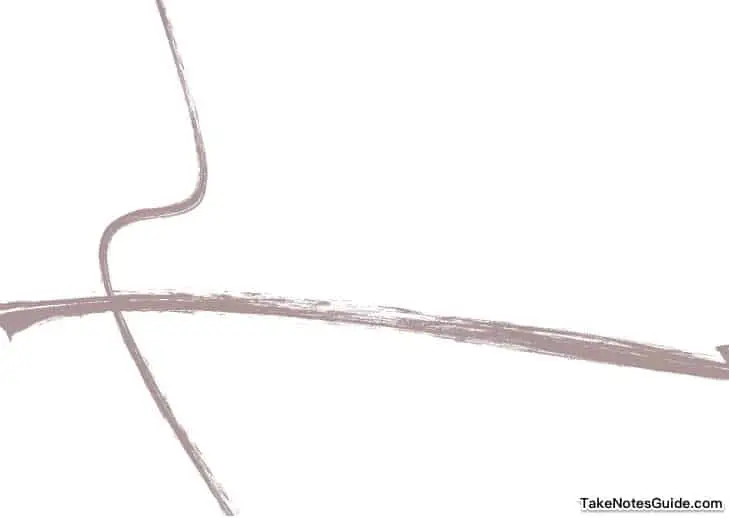
Bonus Tip: The Unorthodox Method For TakeNotesGuide Readers
Go through and test out the list of all methods in TakeNotesGuide posts, eliminate all possible methods that did not work for you. The ones that remain working for you are the ones that should stick with you. This is perhaps one of the best ways to learn which note-taking technique or approach suits you – Through the sheer experience of an elimination process. On the bright side, it is more likely to settle on a note-taking approach that works encountered first without having to go through the whole lot.
Apps
Visual notes and audio recording
Take visual notes (take photos with smartphones & add optional notes) and record the instructors’ verbal teachings with permission. With visual notes, you spend minimal or no time on writing/typing and instead focus on understanding the teachings. The recorded audio teachings can be replayed and listened to while traveling or exercising. That will better the use of your time when you are not in class. Together, the audio recording and visual notes can act as both a review and fill in understanding gaps.
Video recording can work as well for a disciplined student but the separation can be better as going through either visual or audio will force you to understand and pair with the other to make sense. Also, the visual notes will work much better for quick reviews than videos. Important audio recording parts can be clipped for reviews too. Full videos can contain too much information at once and overwhelm the student or induce a state of false complacency thinking that collecting the videos is enough to comprehend and grasp the concepts.
Typora
So far Typora is perhaps the best Markdown Editor Mac App. Free in beta. The markdown is transformed in the same editor frame after completion of each line, the only markdown editor that I have seen has this feature, plus it also has LaTeX and UML diagram support. You may see a beautiful screenshot here: Markdown Editors For Note-taking.
Gingkoapp
Gingkoapp is not just another common note app. Remember Divide-and-Conquer in Supercharge With More Than 20 Ways To Take Better Notes? This implements the concept in its way. This app also helps one visualize and take mental notes breaking down the grand scheme of things. To me, the superior strength of Gingkoapp comes from its intuitive organizational structure of notes where the selected note will also highlight the related notes to it. Intuitive for a structure like Typora for conversion. Like Typora, I consider this gem in a class of its league. It offers 100 cards free per month or an economical upgrade, so feel free to test it out.
Evernote
Comprehensive and packed with features. A popular note app in its own league too that may not have another one to compare with. There is a monthly limit of free usage but writing only or mostly words is simply not an issue at all. There is much you can do on Evernote e.g. sharing a note with others, email into Evernote, notebooks for the organization, text, and tags for searching, reminders, audio & images & pdf attachments, FaceTime camera note, cloud sync, and local notebooks, cross-platform support, backup option, export to Evernote & HTML, convert the note to PDF, templates, shortcuts & recent notes convenience access.
Please refer to Beginner’s Guide To Taking Notes On Computer if you are new to Evernote.
For example, one may choose to bookmark URLs and take minimal notes with Google Keep shares for its convenience and then expand upon them with more elaborate writings and drawings inserted in Evernote.
What after you have taken your notes?
Memrise has 3 key scientific principles: elaborate encode, choreographed testing, and scheduled reminders. Read the five papers or publications here.
Did you know that Memrise has many subjects and languages created by the community for studying and drilling? You can create your own notes or flashcards for studying if you cannot find what you want. Memrise has a gamified feel to learning that some prefer. Memrise excel in helping memory retention and recall by offering free spaced-repetition reviews of cards or notes for interactive learning based on science and research.
Alternatively, if you simply need emails at spaced repetitions intervals to remind you of doing something, then consider Harvest.li which is free while available.
Please read More Than 10 Ways For Taking Notes To Memory But Never Stop Improving for more.
Body conditioning
Take showers or wash your face
This may seem a simple act but one of my posts has pointed this out as one of my top recommendations. A natural way to improve blood flow across the body simply is too good a free and wholesome way to leverage your note-taking power to pass on. Remember our skin is the largest organ of the body, so keeping clean for health while stimulating our senses to better concentrate, and even better our mood after a shower.
Exercise and stretching
Exercise and stretching can be an important parts to balance out our hectic lifestyle. According to a study by scientists, 10 hours of still sitting can be balanced out with up to 40 minutes of moderate or vigorous-intensity physical activity.
Personally, I would think anyone who has done a Tabata workout for just 4 or 5 minutes a day will know how tough and exhausting a compact exercise routine can be. For those new to these modern bodyweight routines without external equipment, please feel free to challenge yourself and follow along for better health.
Drink green tea & matcha
Please refer to this post 10 Ideas When To Take Notes.
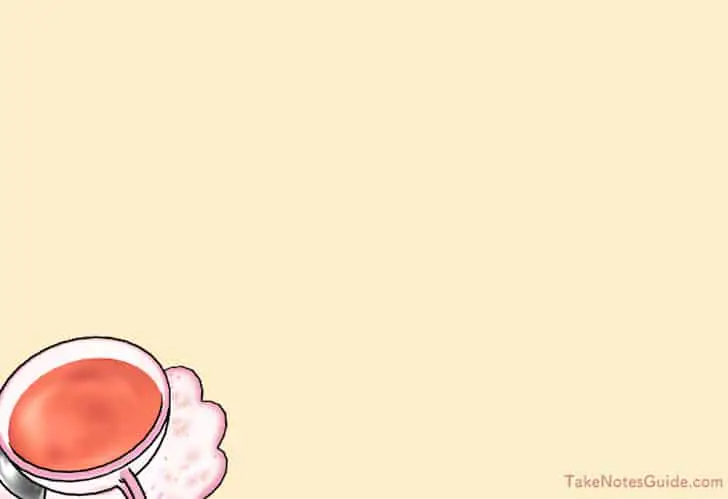
Please feel free to download this or other note-taking templates for your own personal use.
Conclusion
These are the ways and techniques you can apply to be more effective. But everyone is really different. Some people are naturally gifted. Some may just need a push or some training to be a genius. While for some perhaps their talents lie elsewhere. We have to be realistic. I cannot vouch that each and every note-taking method here will work for everyone, that is simply just not possible. And you probably should doubt anyone who tells you otherwise, for note-taking or any other endeavors. Best is an over-used word in these modern internet days, so I can only hope these recommendations here can help you along the way to achieve your best.
A person is as likely to use two or more methods or elements as just one method can be enough to make the most effective notes for his use. A combination may work better or best for you instead; Human character can be complex to figure out. You may get more ideas from Revolutionize With Different Ways To Take Notes and Who Else Wants Note-taking Tips?
Another consideration for taking better or best notes is the use of the appropriate methods that can be the same or different at various progressive stages. Someone who started out may use a quick time-limit technique to be productive. As his skills progress, he may add on more twists and engaging ways to take notes such as imagination and music to stir up interest and flavors. But when he faces burnout, he may have confidence it will pass, go on at a moderate or slower pace or a short break, and take notes as and when good ideas arise over time.
You need to figure out how many notes you take or write on a day comfortably. One can force oneself to perform at an accelerated rate, but this approach may be unsustainable or prone to burnout and lose interest. For example, I think if one can write 500 words of good content at his own pace each or on most days, that can be the right balance of writing longevity and quality content. It is probably pointless to compare different individuals’ aptitude and comfort levels. In order to take the best notes, we should also know what does not work for us and avoid them, including bad habits. Please read Best, Good, And Bad Note-Taking Habits. Just as mixing with the wrong company is detrimental to our best efforts.
Last but not least, consider how have you applied the notes taken? Another interpretation of best notes is notes shared for the benefit of all (most helpful). Please also read Top 17 Ways How To Take Notes For Sharing. The best notes can also be the ones you made into a solution or a product that helped others. For example, you took some notes that can somehow be implemented as a service online, and you start by CodePen programming testbeds, then progress to website and subscriptions. Wouldn’t you say some of the best notes are the ones that eventually made the longest and deepest beneficial impact on the world community?
Good luck and be kind to others!
Related Questions
What if I want to take notes or write in a distraction-free environment and dark interface?
- Please consider Writer for creative writing traditional style. It has a typewriter feel coupled with a dark background. You may just copy and paste into Evernote after writing your article there. Writer probably has the best such environment other than writing in VIM.
- Another even easier alternative is to write in Papier note, which is just a note-taking chrome extension that opens in a new tab with a light grey background day or night mode with word count at page bottom.
- Evernote Android app has a dark theme for selection.
What if I just want an app or extension to mainly help me collect, cite, and share studies and research papers?
Zotero is an open-source app that assists you in researching. Comes with a Mac app and chrome extension. I use Evernote instead but I can certainly see the potential in Zotero that can be helpful when you have to collect a lot of materials especially studies and research papers from the internet. You may also consider Scrible which is also free and similar which I covered in Most Helpful Chrome Extensions For Taking Notes (13 Tested) before. This kind of app is probably mainly focused on internet research purposes. Paperpile.com, an alternative to Zotero to managing research is affordable at $2.99/mo, but this is not my main recommendation because I prefer free and open source.
Google Scholar can also be used for specialized research searching. This may help in filtering out other broad and general google search results.
